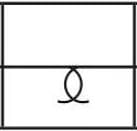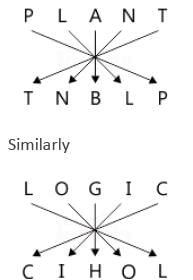NVS TGT Science Mock Test - 4 - NVS TGT/PGT MCQ
30 Questions MCQ Test - NVS TGT Science Mock Test - 4
What is the historical significance of learning about important dates and events?
Which country's coast near Dar es Salaam is set to be hit by Cyclone Hidaya from the Indian Ocean?
Directions to Solve
In each of the following questions find out the alternative which will replace the question mark.
Question -
Carbon : Diamond :: Corundum : ?
Direction: If a Paper (Transparent Sheet) is folded in a manner and a design or pattern is drawn. When unfolded this paper appears as given below in the answer figure. Choose the correct answer figure given below.
Find out from the four alternatives as how the pattern would appear when the transparent sheet is folded at the dotted line.
Question Figure

Answer figure

Direction: Study the following question carefully and choose the right answer.
If PLANT is coded as TNBLP, then LOGIC will be coded as
'Mountain' is related to 'Hill' in the same way as 'River' is related to:
Directions to Solve
Each of the following questions has a group. Find out which one of the given alternatives will be another member of the group or of that class.
Question -
Root, Stem, Branch
Which of the following sentences is true about learning?
Which of the following is a significant cause for the failure of a teacher?
Which of the following concepts of teaching involves data collection and allows a teacher to evaluate his/her own teaching abilities and helps them to improve professionally?
If upthrust U is equal to 1/4 the weight of the object in air, then the weight felt in the liquid is
If a lens has a focal length, f = -12 cm. then it is a
Scientifically, work is said to be done in which of the following cases
Which of the following is the correct electronic configuration for magnesium?
Anything that influences the valence electrons will affect the chemistry of the element. Which one of the following factors does not affect the valence shell?
If all the reactants in a chemical reaction are completely used, which of the following statements accurately describes the relationship between the reactants and the products?
Lysosome is a cytoplasmic organelle containing enzymes that break down biological polymers. Lysosomes function as the digestive system of the cell. It is also called the suicide bag of the cell because:
Application of nitrogenous manure to a plant causes:
The major problem in harnessing nuclear energy is how to
Fill in the blank with the correct option.
It almost always rains in Seattle. The sun ________ shines there.
















